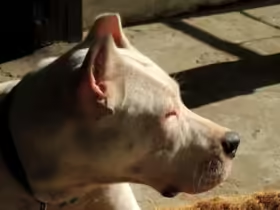Introduction
Choosing the right toy for your dog can feel overwhelming with so many options available, but it’s an essential part of keeping your pup happy, mentally stimulated, and physically active. The wrong toy can pose safety risks or fail to engage your dog, while the right one will bring hours of joy and enrichment.
In this comprehensive guide, we’ll break down everything you need to know about selecting the perfect dog toy, including factors like size, material, safety, and your dog’s unique play style. Whether you have a playful puppy, an aggressive chewer, or a gentle senior dog, this guide will help you make an informed decision.
1. Understanding Your Dog’s Play Style
Before selecting a toy, consider your dog’s individual play preferences. Every dog is different, and their toys should reflect that. Here are a few common play styles to consider:
- Chewers: Some dogs, like Pit Bulls or Bulldogs, love to chew. For these pups, durable chew toys made from tough materials like rubber or nylon are essential.
- Fetch Enthusiasts: Dogs like Retrievers and Border Collies thrive on fetch games. Balls, frisbees, and other throwable toys work well for these active pups.
- Tuggers: If your dog enjoys tug-of-war, look for sturdy rope toys or toys designed for pulling. These are usually made from cotton or nylon for durability.
- Cuddlers: Some dogs, especially smaller breeds, love soft toys to snuggle with. Plush toys can be great, but be mindful of stuffing if your dog likes to chew.
- Puzzle Solvers: Certain dogs need mental stimulation as much as physical exercise. Puzzle toys, where treats are hidden inside, can be great for breeds like the Poodle or Border Collie.
2. Selecting the Right Size
Size is an important factor in toy selection. A toy that’s too small can become a choking hazard, while one that’s too large might be difficult for your dog to play with.
- Small Dogs: Breeds like Chihuahuas, Dachshunds, and Pomeranians need toys that are easy to carry and fit comfortably in their mouths. Look for smaller balls, plush toys, or mini versions of larger toys.
- Medium Dogs: For breeds like Beagles, Cocker Spaniels, or French Bulldogs, choose medium-sized toys that are neither too small to pose a choking risk nor too large to become cumbersome.
- Large Dogs: Bigger breeds like Labradors, German Shepherds, or Golden Retrievers need larger, more durable toys that can withstand stronger jaws and aren’t easily swallowed.
When in doubt, always choose a slightly larger toy rather than a smaller one for safety.
3. Material Matters: Durability and Safety
The material of the toy plays a huge role in its durability and safety. Some materials are better suited for certain dogs and play styles. Let’s explore the most common ones:
- Rubber: Durable, flexible, and easy to clean, rubber toys are perfect for aggressive chewers. Kong toys, for example, are made of high-quality rubber and are known for their durability.
- Nylon: Many chew toys are made from nylon. They’re tough but can sometimes be too hard, which might damage your dog’s teeth. Always monitor your dog while chewing these toys to ensure they’re not breaking off pieces.
- Cotton and Rope: Great for tug toys, cotton rope toys are durable and can also help clean your dog’s teeth. Just be cautious if your dog likes to shred, as swallowing strands of rope can cause digestive problems.
- Plush/Fabric: Soft toys are perfect for dogs who enjoy cuddling their toys or carrying them around. However, they’re not suitable for aggressive chewers, as the stuffing can pose a choking hazard. Some plush toys come with squeakers inside, which can add to the fun, but again, these can be risky if swallowed.
- Latex and Vinyl: These materials are often used for squeaky toys and are more suitable for light to moderate chewers. They can easily break with aggressive play, so they may not be the best choice for all dogs.
4. Safety First: What to Watch Out For
When it comes to dog toys, safety is the number one priority. Here are some key safety tips:
- Avoid Small Parts: Toys with small parts (like buttons or plastic eyes) can be chewed off and swallowed, leading to choking or intestinal blockages.
- No Strings or Ribbons: Toys with strings or ribbons can cause serious harm if ingested. They can wrap around your dog’s intestines, causing blockages that may require surgery.
- Durability Over Aesthetics: While cute toys are tempting, always prioritize durability over appearance. A toy that looks adorable but easily falls apart can be a danger to your dog.
- Check for Wear and Tear: Regularly inspect your dog’s toys for signs of damage. Discard any toy that’s coming apart, especially if your dog is likely to ingest pieces.
- Non-Toxic Materials: Ensure that any toy you buy is made from non-toxic materials. Avoid toys made with harmful chemicals like BPA, lead, or phthalates.
5. Different Types of Dog Toys
Now that you understand the key factors to consider, let’s dive into the different types of toys available:
- Chew Toys: Ideal for dogs who need something to gnaw on, chew toys come in various materials like rubber, nylon, and even edible varieties. Look for ones that are durable enough for your dog’s chewing habits.
- Interactive Toys: Puzzle toys that dispense treats can keep dogs mentally stimulated and prevent boredom. These toys are great for intelligent breeds or dogs who need extra engagement.
- Fetch Toys: Balls, frisbees, and other throwable toys are perfect for outdoor play. Make sure the material is durable and the size is appropriate for your dog.
- Plush Toys: Soft and cuddly, plush toys are good for dogs who like gentle play or need a toy to snuggle with. Keep an eye on dogs who tend to rip them apart, though.
- Tug Toys: Rope toys or specially designed tugging toys can offer interactive play between you and your dog. Ensure the material is strong enough for tugging but won’t fray easily.
6. Tailoring Toys to Your Dog’s Age
A dog’s age can influence what type of toy is best:
- Puppies: Puppies need toys that are soft on their growing teeth but durable enough to withstand chewing. Teething toys, made of softer rubber or fabric, can soothe aching gums.
- Adult Dogs: Adult dogs, depending on their size and breed, may require more durable toys. Puzzle toys can provide the mental stimulation they crave, while fetch and tug toys can meet their physical exercise needs.
- Senior Dogs: Older dogs may need softer toys due to weaker teeth and gums. Opt for plush toys, soft rubber, or gentle chew toys that won’t be too tough on their mouths.
7. Engaging Your Dog with Toys: Tips for Maximizing Playtime
Once you’ve chosen the perfect toy, here are some tips to make the most out of playtime:
- Rotate Toys: Keep things fresh by rotating your dog’s toys every few days. This prevents boredom and keeps them excited for new play sessions.
- Supervise Playtime: Always monitor your dog during play, especially with new toys, to ensure safety.
- Interactive Play: Engage with your dog during playtime. Whether it’s a game of fetch or tug-of-war, interactive play strengthens the bond between you and your dog.
Conclusion
Choosing the right dog toy involves more than just picking something cute or fun. By considering factors like size, material, safety, and your dog’s unique play style, you can find the perfect toy to keep your furry friend happy and healthy.
Remember, no toy is indestructible, and supervision is key. Regularly check toys for wear and tear, and replace them as needed. With the right selection, your dog will enjoy hours of safe, engaging play that contributes to their overall well-being.











Leave a Reply